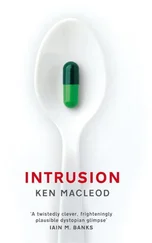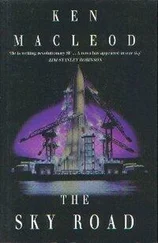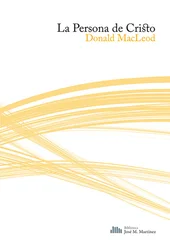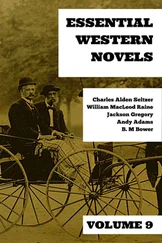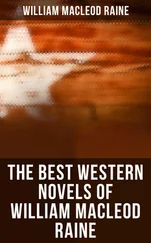Carlyle felt as if her own head had turned hollow and hard. The room went cold and dim for a moment. She fought down a dry heave. A long slug of whisky burned along her throat and warmed her belly and brought some blood back to her brain.
‘Losing heads seems to be an environmental hazard on pulsar planets,’ she said, toughing it out. ‘Ever wonder if your other body’s still headless, Johnstone?’
‘I have indeed,’ he said. ‘I guess we’ll find out, huh?’
T
he DK Interests Section in New Glasgow maintained a quantum-entanglement comms link to the nearest branch of the Shipyard Twenty-Nine production brigade. Carlyle held out for expenses, which she had carefully costed: as well as the lead shielding, surprisingly expensive, there were the usual crew pay, backups and insurance, the hire of a ship. Normally that was implicit in the contract price, but you couldn’t be too careful with DK. To her surprise they agreed straight away, and topped her opening bid with an offer to pay 5% up front. She walked out of the building with a thick wad of AO kilodollars which every few minutes she checked again until she was sure they weren’t about to turn into dry leaves.
Sorting out the hire of a ship and the installation of the shielding took another couple of days, after which they were ready to go as soon as they’d all taken a last-minute backup. At the drily named Terminal Clinic just outside the gate complex the tech balked at first over Higgins; Carlyle frowned him down. He was just being awkward, she pointed out: reading a chip had to be easier than reading a brain. She tried to put the momentary unpleasantness from her mind as her own reading was taken. As always, it was overridden by the poignancy of such occasions, routine though they were; a feeling of sorrow for the person who would be resurrected, not the self who would have died. It was like seeing yourself in an old photograph. If they were lucky, they’d all make it back alive, take another backup and check out on a warm flood of heroin in the hospice ward. But they couldn’t bet on making it back. This might be her last saved self.
Outside she looked over her team. They could have been going on a skein hike. Not much food; this job was going to be quick or not at all. Suits, lights, emergency high-calorie rations, water, one Webster each just in case.
‘Keep the last cartridge,’ said Johnstone, stashing a charge, and Higgins laughed. They set off through the gate. Fifteen transitions later, they arrived at the planet where the ship waited. Beyond the terminal’s plate-diamond window it sat on a bright field under a black sky where only a vast circular occlusion of the stars showed the primary, a brown dwarf. They sealed their suits and trekked out through the airlock and across the field to the ship. Its name was lettered in stencil style on its side: Extacy . Everything unnecessary on board had been stripped out. The lead-brick shelter gleamed dully like a giant slug. A massive crane and a shapedcharge Webster reaction bomb occupied the cargo bay. Higgins checked the crane, gave a thumbs-up. Johnstone and Carlyle checked the bomb. The pilot was a teenage AO tyke with freckles and hair the colour of wheat. He led them into the shelter and they huddled on the floor next to the drive.
‘This’d better be worth it,’ he said, by way of greeting, as he fingered a jury-rigged control panel that looked like a games console. Carlyle flipped him what remained of her roll of advance money.
‘Call that a bonus,’ she said. ‘Lift and fittle, already.’
Johnstone patched him the coordinates. The pilot scrolled up the resulting stellar map, rolled his eyes upward, closed them for a moment in what might have been prayer, and fired up the drive. Twenty light-years and half an hour later, they were in the pulsar’s system. Another two hours of careful manoeuvring and they were at the site.
‘You really expect to die out there?’
‘No,’ said Carlyle stiffly. ‘We’ll just be walking dead when we come back on board. Like the zombies from the cities after the Big One. I’m sure your grandmother told you about them.’
The boy shivered. ‘Holy Koresh help you.’
‘Yeah,’ said Higgins nastily, ‘ he knew all about suicide. Now open the fucking door.’

J
ohnstone had guided the Extacy to within fifty metres of the cave entrance. Out on the surface the cliff-face was barely visible. With the lights full on Carlyle could see clearly a few steps in front of her. Every couple of seconds the faint glow in the atmosphere peaked and faded, which with the simultaneous spikes on her radiation moniter were the only indications of the pulsar’s spin. Before they’d gone five metres the dosimeter in her head-up was over the yellow line for Abort Mission, Seek Medical Attention . There was only the red line above that: Fatal Dose, Please Back Up Your Memory to a Secure Server . She avoided watching the virtual needle’s upward creep.
Johnstone drove the balloon-wheeled flatbed truck down the ramp and the two women clambered on. There were no seats, just a bar to hang on to. Like the ship, the vehicle was stripped to a minimum. The controls were on a handset over which Johnstone’s thumb flipped back and forth.
The cave, when they reached the entrance a minute or two later, was not at all what Carlyle had expected. The air was clearer, visibility much better. The walls—about three metres apart, just enough clearance for the truck—were smooth and the angles between them and the floor and roof were sharp. Rather than the diffuse glow of ionised air and surface radioactives, it was lit by distinct glowing patches every few metres along the roof.
‘This isn’t a cave,’ said Higgins. ‘It’s a tunnel.’
‘When you’re looking at the work of the Raptured,’ Johnstone said, ‘that distinction becomes kind of moot. Check out our expedition report sometime. None of this shows any trace of having been made, or the rock’s having been worked . It’s like some wildly unlikely coincidental outcome of geological processes. Like those natural nuclear reactors they found in Africa, only more so.’
Carlyle had often enough seen structures of which the same could have been said, but something about Johnstone’s confident statement niggled at her. Before she could track down the elusive thought, the truck emerged from the tunnel into a chamber about forty metres high and wide and over a hundred metres long. The light-patches, at this distance quite obviously rectangular, dotted the vaulting roof and soaring sides. The floor was littered with large complicated metal objects whose nature as machinery was as clear as their purpose was obscure. It was like standing in a cathedral that had been taken over by militant scientific atheists as a laboratory or factory, and then abandoned. The truck’s lights, as they moved, cast shadows like encroaching cowled inquisitors eager to avenge the sacrilege.
Johnstone idled the truck, jumped out and led the way through the machinery. He stopped in front of what looked like a solid gold omega, the circular part about two metres across, the two horizontal pieces at the bottom fixed to a steel plinth in which several control panels were embedded.
‘There it is,’ he said. ‘The transmitter.’
‘How do we get that onto the truck?’ Higgins asked.
‘Very carefully,’ said Johnstone.
He remote-controlled the truck along the path they’d taken on foot, bringing it to a halt a couple of metres away. Then he lowered the flatbed platform to the ground. He sprayed the edge of the platform, and the floor between the truck and the QTD, with buckyball lubricant. Carlyle was expecting they’d have to push it, but Johnstone tied some carbon-fibred rope to the object and Higgins expertly converted the engine shaft to a winch. Very slowly, and steadied by all three of the team, the QTD transmitter was eased on to the truck and lashed into place.
Читать дальше


